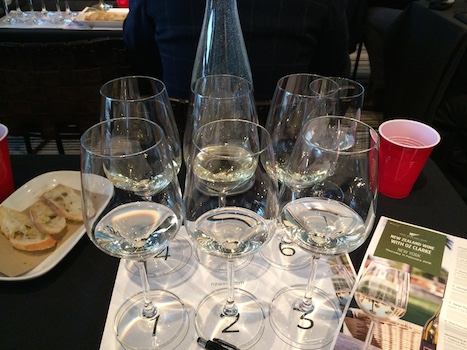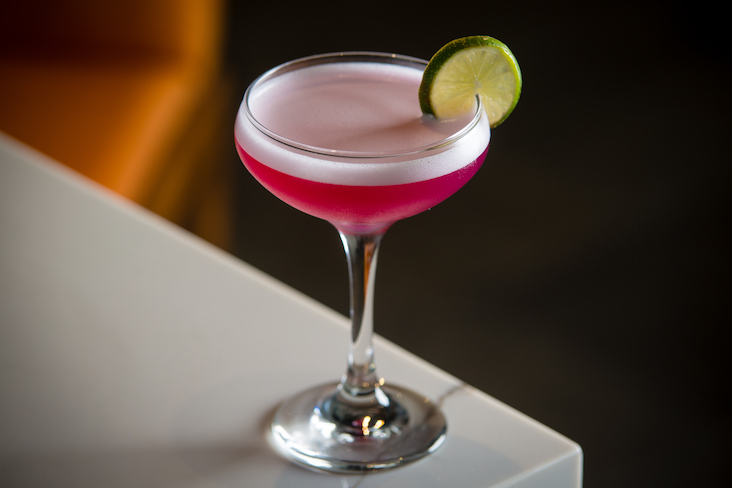New Zealand sauvignon blanc “is so much more than a $10 supermarket wine,” according to British wine writer Oz Clarke. That’s why the New Zealand Winegrowers held the first International Sauvignon Blanc Celebration this past February in Marlborough, New Zealand.
And while the country has become known for sauvignon blanc, New Zealand also produces impressive wines from other varietals. Clarke hosted a masterclass on New Zealand wine in New York earlier this year at Colicchio & Sons; here are a few of the fast facts on the region.
1) Unique and optimal wine-growing conditions.
Surrounded by oceans in the Southern Hemisphere, New Zealand is located “absolutely at the bottom of the world,” Clarke said, right above Antarctica. The “roaring 40s” winds dump rain onto the top of the mountain range while cold dry air and sun stays on the other side. “It’s a classic rain shadow,” Clarke said.

Oz Clarke explains the nuances of New Zealand wine.
Marlborough is the sunniest place in New Zealand, but it’s not the warmest, Clarke said. “You don’t need heat to grow grapes, you need sunshine.”
2) A recent and underestimated wine history.
A French report in 1950 said that New Zealand wine was unfit for consumption, Clarke said. But when New Zealand started created the flavor of its sauvignon blanc in the 1980s, “It was the beginning of a new era of what white wine could taste like,” he said.
What’s more, Clarke noted that it was once believed that you could never grow wine grapes in Marlborough. It’s now one of the most famous wine grape-growing regions in the world.
3) Green is good.
Thirty days of sun a month in the summer gives New Zealand white wines a freshness and greenness, with flavors of apples limes and fresh herbs. Consumers often make the mistake of being too critical of green when it comes to wine, Clarke noted, while winemakers lean to “dead-fruit,” overripe wines.
“Overripe is not better,” he said, noting that farmers typically pick fruit for their own consumption a day or so before it ripens on the tree.
4) A source for superb chardonnay.
New Zealand has nine areas for making world-class chardonnay, Clarke said, including Nelson, Central Otago and Hawke’s Bay.
As the market moved away from chardonnay a few years ago, some of the winemakers “lost their courage, but now they’ve got it back in spades,” Clarke said. In general, he added, “we in Europe think that chardonnay is on the way back.”
5) Wines with unique energy.
“Acidity is a beautiful thing to lead the wine,” Clarke said. From its celebrated whites to its high-quality pinot noirs, syrahs and red blends, “New Zealand wines have a lot of energy—the acidity is always there,” he noted.








